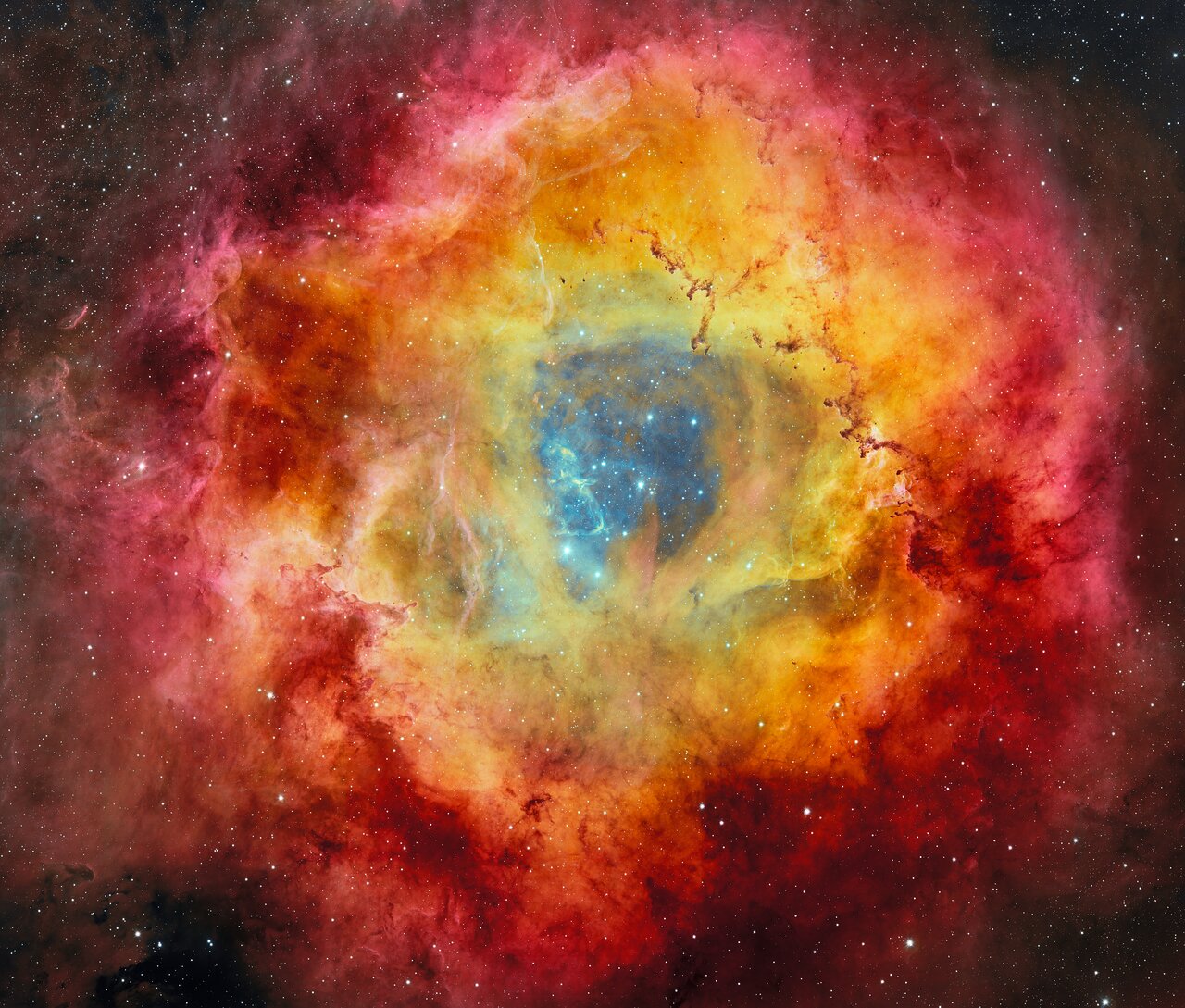
What it is: The Rosette Nebula
Where it is: 5,000 light-years away, in the constellation Monoceros, the unicorn.
When it was shared: Oct. 1, 2024
Why it's so special: The Rosette Nebula is a big deal. At about 130 light-years across, it's roughly five times the size of the Orion Nebula — the closest star-forming region to Earth — and about four times farther away, according to the National Science Foundation's NOIRLab. It contains a lot of gas and dust. If that sounds dull, think again — just look at this spectacular image from the Dark Energy Camera (DECam) in Chile.
Those sparkling colors are caused by the ultraviolet radiation produced by the nebula's massive stars. That radiation ionizes (electrically charges) the surrounding hydrogen gas. In this image of the nebula, you can see shades of yellow and gold (ionized oxygen), red (ionized hydrogen) and pink (ionized silicon).
Related: 38 jaw-dropping James Webb Space Telescope images
At the center of the 377-megapixel image is NGC 2244, a bluish cluster of young, massive stars that has sculpted and illuminated a large cavity within the surrounding gas. NGC 2244 is about 2 million years old — an infant, in cosmic terms — and formed after the nebula's gases coalesced into clumps brought together by their mutual gravity. They give the Rosette Nebula its glowing "eye."

If you look closely at the central void, you'll see "elephant trunks," or pillars of dust that mark the transition from the ionized hydrogen near the hot, young stars to the cooler hydrogen beyond. They're in trunk-like shapes because, as the shell-like void expands beyond the star cluster, the clumps of cooler gas resist.
We're seeing this "cosmic rose" at just the right time — within about 10 million years, the radiation from the hot, young stars of the cluster will have dissipated the nebula.
The image — also available as a zoomable version — was published to mark the fifth anniversary of NOIRLab, the U.S. national center for ground-based, nighttime optical and infrared astronomy. It was taken using the 570-megapixel DECam, which is mounted on the Víctor M. Blanco 4-meter Telescope at the Cerro Tololo Inter-American Observatory in the southern Atacama Desert in Chile.
For more sublime space images, check out our Space Photo of the Week archives.







